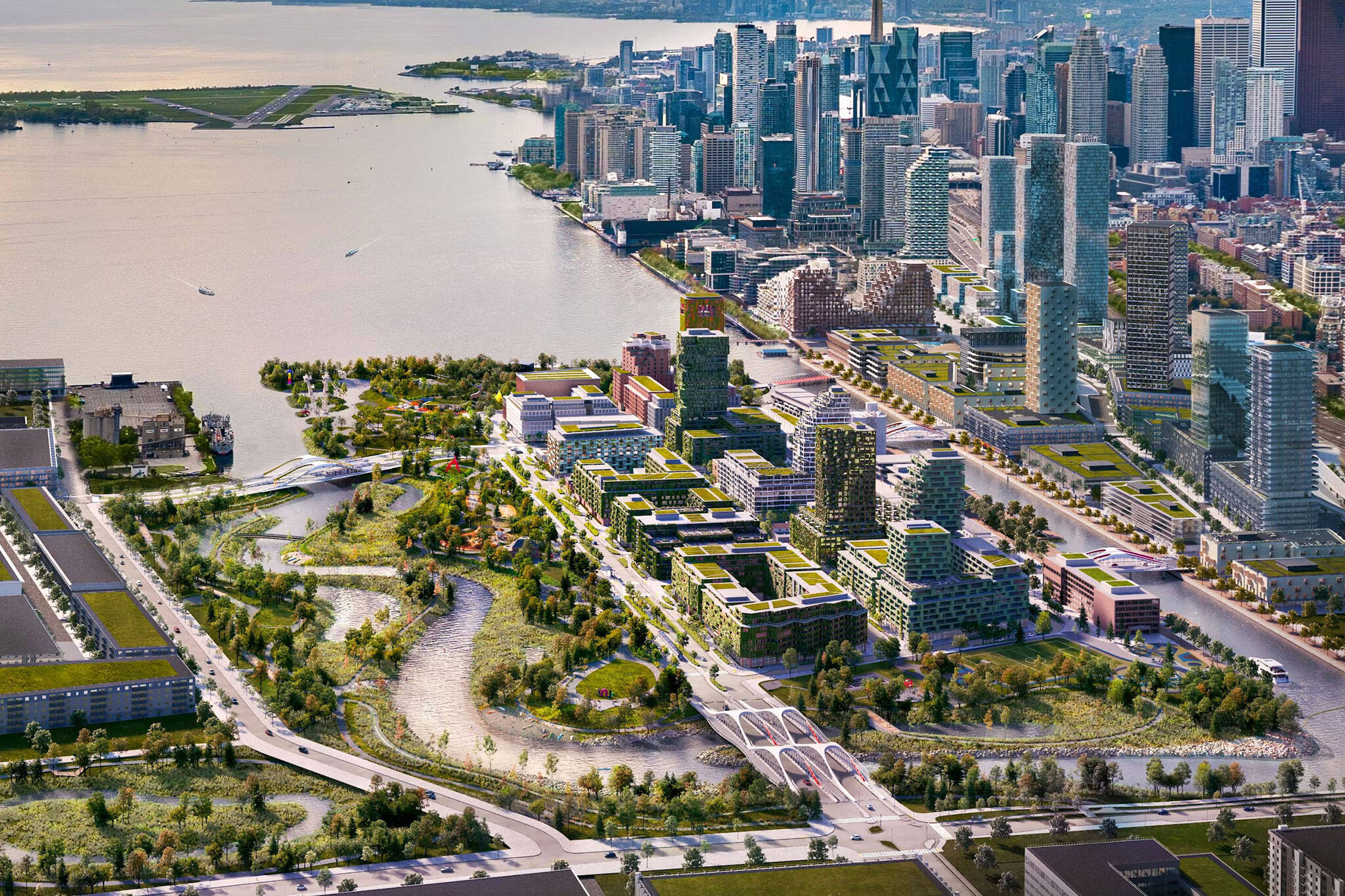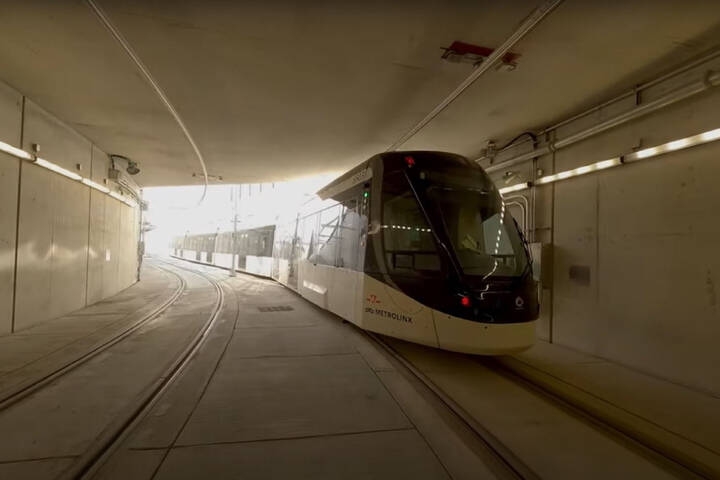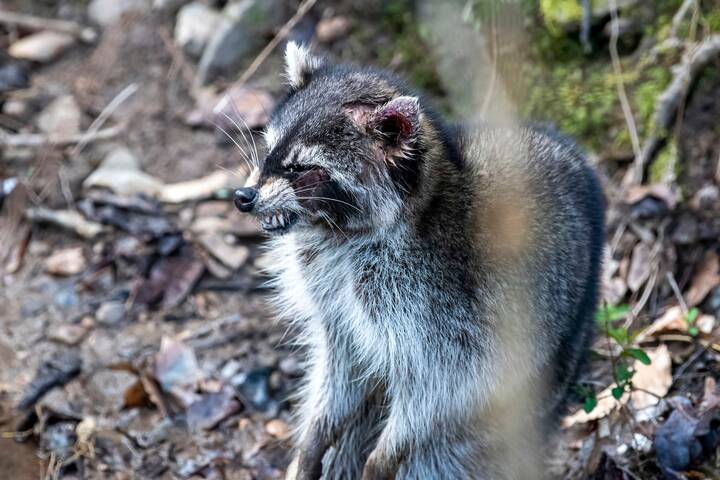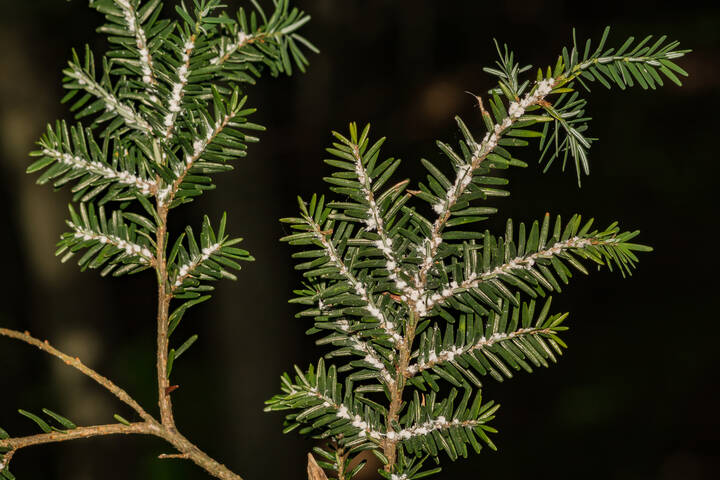
How Toronto's new human-made river will make the leap from ditch to waterway
A once-in-a-generation eco-engineering project reshaping Toronto's Port Lands will soon give the city a new naturalized river mouth and human-made island.
Construction on the $1.25 billion Port Lands Flood Protection Project has captivated audiences since 2018, when lake-filling works kicked off the formation of new shorelines. Years later, the serpentine course of the new river mouth has taken shape south of the Keating Channel, and it won't be too much longer before the water flows through this new valley.
Just don't expect it to happen all at once.
A new video shared by Waterfront Toronto explains how the process of flooding the river valley may underwhelm the public at first, but will eventually result in a new natural-ish gem for locals.
Joey Herrington, Senior Project Manager for soil remediation and earthworks on the project, breaks down the process of how a group of three cut-off walls — or plugs — will be pulled to flood the river valley, in what turns out will be somewhat of an anticlimactic process.
In the video, Herrington says he is frequently asked, "When are you going to pull the plugs and flood the new river valley? Isn't that going to be awesome!?"
"Well, I'm here to burst your bubble, sorry!" exclaims Herrington, continuing, "When people imagine the flooding of the new river valley by removing the plugs, they are usually imagining something really dramatic."
One might imagine a torrent of water filling the valley, akin to a floodgate being opened, but Waterfront Toronto is taking a gentler approach, which Herrington explains is being done "for a variety of reasons."
"Letting the water rush in all at once would also be tough on the river bottom materials and plants we just installed, which are still getting their roots established," explains Herrington.
The currently-dry river valley is separated from waterways at three points, where cutoff walls, or plugs, hold back water at the Keating Channel to the north, Polson Slip to the west, and the ship channel to the south.
Removal of these plugs all at once would allow raging waters to disrupt the plantings in the river bed as roots continue to take hold. Instead, the plan is to keep the plugs in place and pump water into the new river valley in what is expected to be a gradual three-week process.
Plugs will only be pulled after the human-made river mouth's water levels are equal to the surrounding lake and channels so as not to create an immediate rush of water.
The Don Greenway will be the first area to be flooded. As it is not directly connected to the new river mouth's flow — aside from during storm events — this will be the first plug to be removed. The valley itself will be flooded next, followed by the removal of the west, and, finally, the north plug.
This task will be accomplished by crews using diamond rope saws or drum cutter tools to cut away the concrete cutoff walls, uniting the new mouth with its feeder river to the north and lake outlet to the west.
Once all plugs are removed, the existing Don River will flow into the new valley from the site of the current north plug and flow out of the present west plug. The southern plug site at the Don Greenway will provide the river with a direct overflow outlet for storm events, similar to how a spillway acts on a dam.
The completed river mouth will eliminate a vast floodplain and prime a whole pocket of the city for new development.
Waterfront Toronto
Latest Videos
Latest Videos
Join the conversation Load comments







